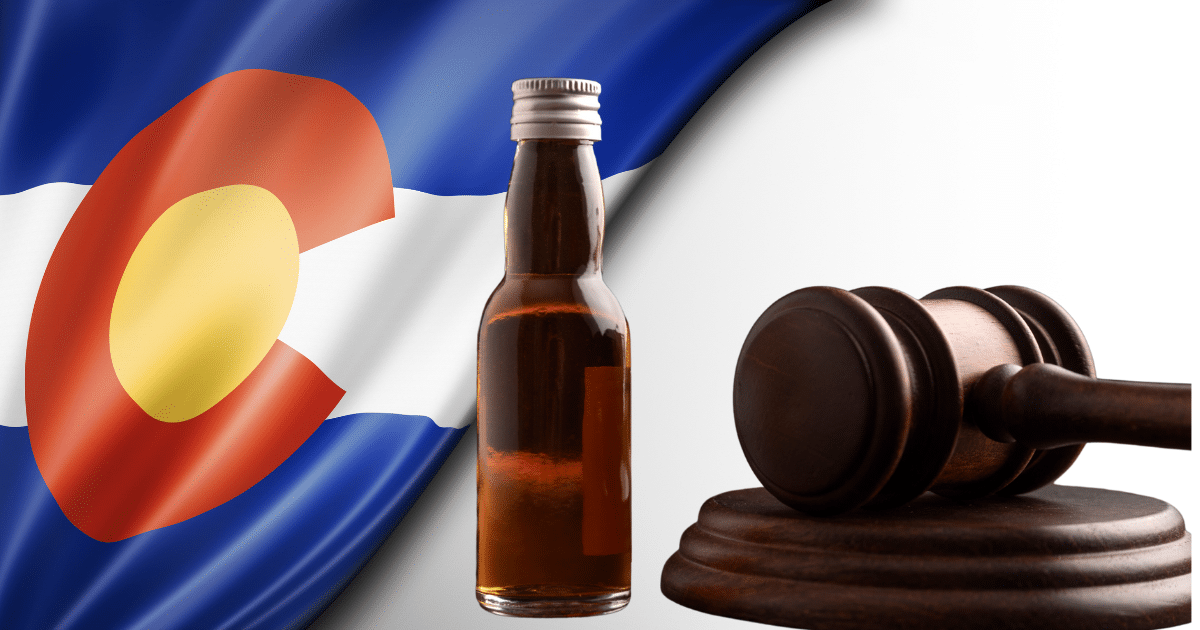Besides nicotine, alcohol is the most popular drug across the country, which is why so many individuals suffer from alcohol abuse. Surveys from the National Institutes of Health, show that over 85% of adults in the country reported that they drank alcohol at some point in their lifetime. Moreover, 15.1 million adults aged 18 and older identified as having alcohol use disorder. An estimated 88,000 people die from alcohol-related causes each year making the substance the third leading cause of preventable death in the United States behind tobacco and poor diet and lack of exercise.
Alcohol abuse is felt by all states, but there are a few states specifically that are disproportionately affected by the substance. Oklahoma, for instance, is one state that sees high rates of alcohol abuse and alcohol-related deaths. According to the Oklahoma State Department of Health, alcohol killed 1033 Oklahoman’s from 2007 to 2016. According to the state’s Department of Mental Health and Substance Abuse Services, alcohol is a top substance of abuse in Oklahoma.
Substance abuse in general is prevalent in the state. According to the Oklahoma Department of Mental Health and Substance Abuse Services (ODMHSAS), the state ranked second in the nation for rate of substance abuse disorders. This means that around 300,000 people are dealing with some type of substance abuse.
In Oklahoma, over a quarter million people aged 12 and over exhibit dependence on or abuse of alcohol. Moreover, 159,000 Oklahoman’s ages 21 and older reported heavy alcohol use — meaning they had five or more drinks on — in the past 30 days. Meanwhile, the people who need treatment are not getting it, in fact, only 7.6 percent of those people in need get alcohol treatment.
Oklahoma and Alcohol
Despite the alcohol may present to the state, the substance has become more readily available over the past year. A State Question that passed in the November 2016 took effect last October. The measure made it so grocery and convenience stores could sell beer up to 8.99 percent alcohol and wine up to 14.99 alcohol. The previous law only allowed that strength of alcohol to be sold in liquor stores.
While the drinking rates in Oklahoma are generally lower than the national rate, there is still a large amount of Oklahoman’s that have who drink regularly and drink heavily. In a report done by the ODMHSAS, almost 4 percent of Oklahoman’s were heavy drinkers while 13 percent had reported binge drinking in the past 30 days.
Alcohol plays a role in many crimes committed in the state of Oklahoma. The Oklahoma State Bureau of Investigation reports that in 2017, just under 25 percent of adult arrests had an alcohol-related connection.
If you or a loved one is struggling with alcoholism, call Landmark Recovery at 888-448-0302. One of our rehab facilities is in Oklahoma City.
Tulsa
Similar to the state, alcohol is the primary drug of choice for 27 percent of Tulsa County residents and alcohol was a contributing factor in 45 percent of treatment admissions. Furthermore, the DUI rate in Tulsa County is 20 percent higher than the state average.
Almost 19 percent of all arrests in Tulsa County were alcohol-related.
Underage Drinking
According to information from the Oklahoma Department of Mental Health and Substance Abuse Services, 40 percent of Oklahoma high school students are current drinkers, with 20 percent had their first drink before the age of 13. In fact, in 2009, kids under the age of 21 consumed 20 percent of all alcohol sold in Oklahoma.
Unfortunately, underage drinking increases the chances of a number of significant health consequences. For instance, people who start drinking before the age of 15 are five times as likely to develop a dependence on alcohol later in life than people who begin drinking at or after turning 21. Similarly, younger teens who start drinking are more likely to engage in harmful behaviors. According to the Center for Disease Control and Prevention, young drivers are 17 times more likely to die in a car crash when alcohol is involved. Also, teens who binge drink are more than 63 times as likely to use cocaine than teens who don’t drink.
There are also a number of long-term physical effects that young drinkers can suffer from. The brain doesn’t stop fully developing until about the age of 25, drinking, especially drinking in excess, can inhibit this process and led to problems with long-term thinking and memory skills. Likewise, it drinking is also known to impact other body processes such as the liver and reproductive organs.
Drunk Driving
According to data from the Centers for Disease Control and Prevention (CDC), between 2009 and 2018, there were more than 1,850 people killed in car crashes involving a drunk driver in Oklahoma. Despite fewer Oklahoma drivers admitting to driving after drinking too much compared to the national rate, the state saw a significant difference in death rates due to drunk driving across all ages.
According to the Oklahoma Highway Safety Office, in 2017, there were 6478 alcohol-related crashes in the state of Oklahoma, 171 of these were fatal.
Oklahoma Alcohol Rehab
One of the most well-known alcohol support groups across the entire country, and other parts of the world, is Alcoholics Anonymous. Alcoholics Anonymous, or AA, is an international organization meant for all people who have had a drinking problem. It is a nonprofessional, self-supporting, apolitical organization that is available almost anywhere, membership is open to anyone who want to improve their drinking problem.
For Oklahoma, there is a resource for people looking for AA meetings in the state, the website allows users to look for meetings across the state and provides information about upcoming events and services.
For some people struggling with alcoholism or another type of substance abuse, the problem may be too severe to start support groups immediately and may require a patient going through a rehab program to help with withdrawal symptoms.
Many rehabilitation facilities will offer patients medically assisted detox services to help them safely deal with the withdrawal symptoms that are associated with early recovery. Following detox, many inpatient, or residential, facilities will transition to providing patients with one-one-one therapy sessions as well as support groups. During these sessions, patients will normally learn about more about addiction and relapse prevention methods.
Landmark Recovery utilizes all these forms of therapy and detoxification to help all our patients who are dealing with a substance abuse problem.
CBT
Substance treatment can involve implementing various types of behavioral therapy. One prevalent example is cognitive-behavioral therapy (CBT). Typically conducted one-on-one, CBT can also take place in small groups. This therapy aims to identify feelings, situations, and triggers that contribute to heavy drinking and relapse.
Inpatient treatment plans usually have a duration of at least 30 days. After this period, patients receive a discharge and a referral to an outpatient facility that continues to support their recovery.
Outpatient treatment allows patients to transition back to independent living while they adjust to their newfound life of recovery.
DUI and Drug Courts
Along with voluntary drug and alcohol treatment, Oklahoma has a substance abuse court in place. It was initiated in 1998 and was developed to divert people from prison or jail while helping them achieve recovery and become more productive, law-abiding citizens.
Drug courts have proven to be effective. In fact, nationwide graduates of drug courts remain arrest-free for at least two years after leaving the program. Because of this, for every $1 invested in drug court, taxpayers save as much as $3.36 in avoided criminal justice costs down the road.
One story of success posted on the City of Oklahoma’s Police Department’s website talks about one person’s personal ability to overcome alcohol addiction.
“I turned to alcohol to deal with pain, stress, fear, emotional difficulties. In 18 months I destroyed what it took a lifetime to build. Today, I am alcohol free, living a life of recovery, a life not without hardships or shortcomings, for the pain and stress are still there, yet a life with the ability to face adversity and find humor in most situation,” the post said.
What Is Alcohol Use Disorder?
If problem drinking becomes severe, it can eventually become alcohol use disorder, AUD. AUD is a relapsing brain disease that actively manifests through compulsive alcohol use, an inability to control alcohol intake, and the experience of negative emotions when not using alcohol.
About 16 million people in the United States have AUD. There are mild, moderate, and severe forms of AUD.
Assessing AUD
To assess whether you or a loved one has AUD, the National Institute on Alcohol Abuse and Alcoholism suggests asking yourself a few of these questions. In the past year have you:
- Had times when you drank more or longer than intended?
- Tried to cut down or tried to stop drinking, but couldn’t?
- Spent a lot of time drinking or being sick from the aftereffects of drinking?
- Experienced craving or urge to drink?
- Found that drinking interfered with taking care of your home or family?
- Continued to drink even though it was causing trouble with family or friends?
- Given up or cut back on activities that were once important to you in order to drink?
- Gotten into situations while or after drinking that increased your chances of getting hurt?
- Drank even though it was making you feel depressed or anxious?
- Had to drink more than you once did to get the effect you want?
- Experienced withdrawal symptoms, such as trouble sleeping, shakiness, irritability, anxiety, depression, or more?
According to the National Institutes of Health, alcoholism, or alcohol dependence will cause cravings, loss of control, physical dependence, and a buildup of tolerance.
Alcohol Abuse
Alcohol abuse is not physical dependence but is a serious problem The drinking can cause problems at work, home, or school, and may lead to putting yourself or others in dangerous problems that can lead to legal or social consequences.
There are a number of health problems associated with drinking too much. For example, excessive drinking can lead to kidney problems, an increased risk of a number of cancers, alcoholic liver disease, and more.
There is much evidence that shows that excessive alcohol consumption can inhibit kidney function. Specifically, it can weaken the kidney’s ability to maintain the body’s fluid levels, leaving alcoholic people vulnerable to a number of kidney-related problems.
Drinking alcohol raises risk of getting multiple types of cancer including mouth, esophagus, colon, liver, breast, and more. When you drink alcohol, your body uses a chemical called acetaldehyde to break it down. This chemical damages the DNA and prevents the body from repairing the damage. As a result, cells can begin to grow out of control and create a cancer tumor.
Liver damage from alcohol is a serious problem, many people who drink excessively throughout their life become subject to an alcohol-related liver disease. The liver is one of the largest organs in the body, it performs many vital functions to keep the body in good health. While not all drinkers will develop an alcohol liver disease, severe cases can lead to liver cirrhosis and cause numerous health problems.
Learn More
Despite its legality, alcohol is one of the country’s most abused drugs and leads to thousands of Americans’ deaths each year. Like every other state, Oklahoma faces problems with alcohol in the form of excessive drinking, drunk driving, and underage drinking. However, there are a number of rehabilitation facilities for people who are struggling with alcoholism to help them conquer the addiction.
While there are several inpatient facilities nationally, Landmark Recovery is one local facility with an inpatient program in Oklahoma City. If you would like to learn more about the programs that Landmark Recovery offers, please reach out to our admissions team today about a personalized treatment path forward.

Choose Recovery Over Addiction
We're here 24/7 to help you get the care you need to live life on your terms, without drugs or alcohol. Talk to our recovery specialists today and learn about our integrated treatment programs.






